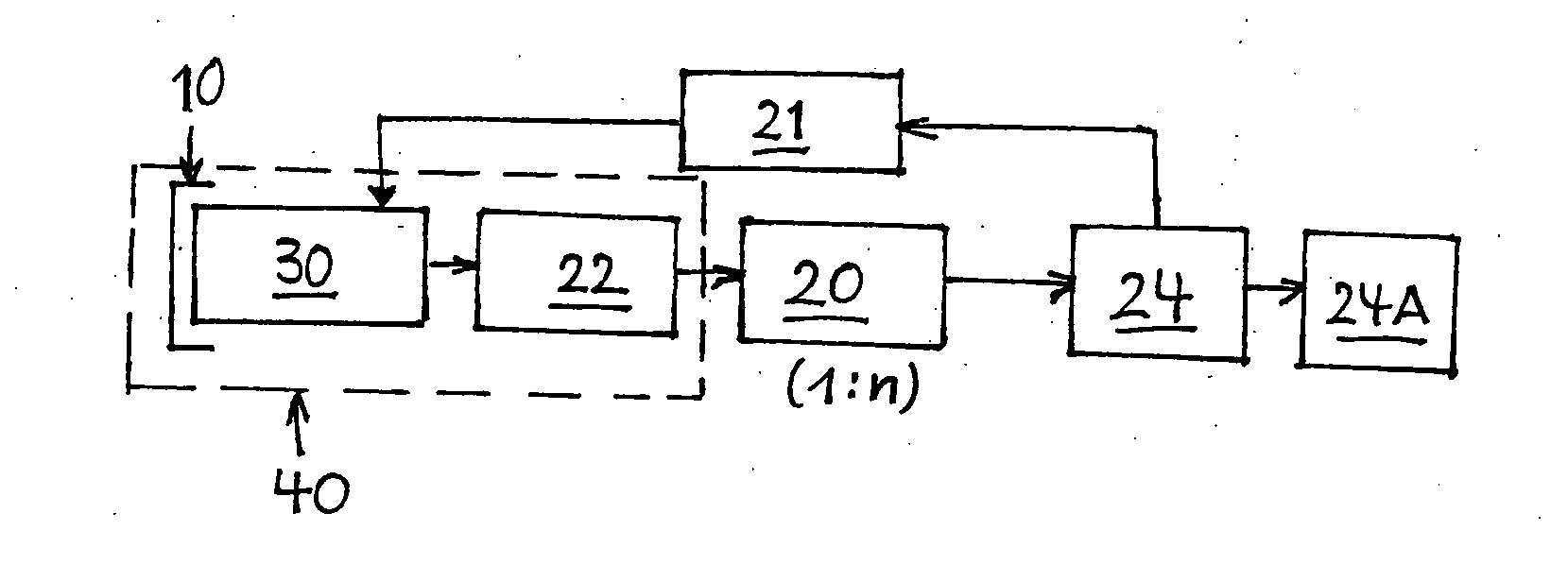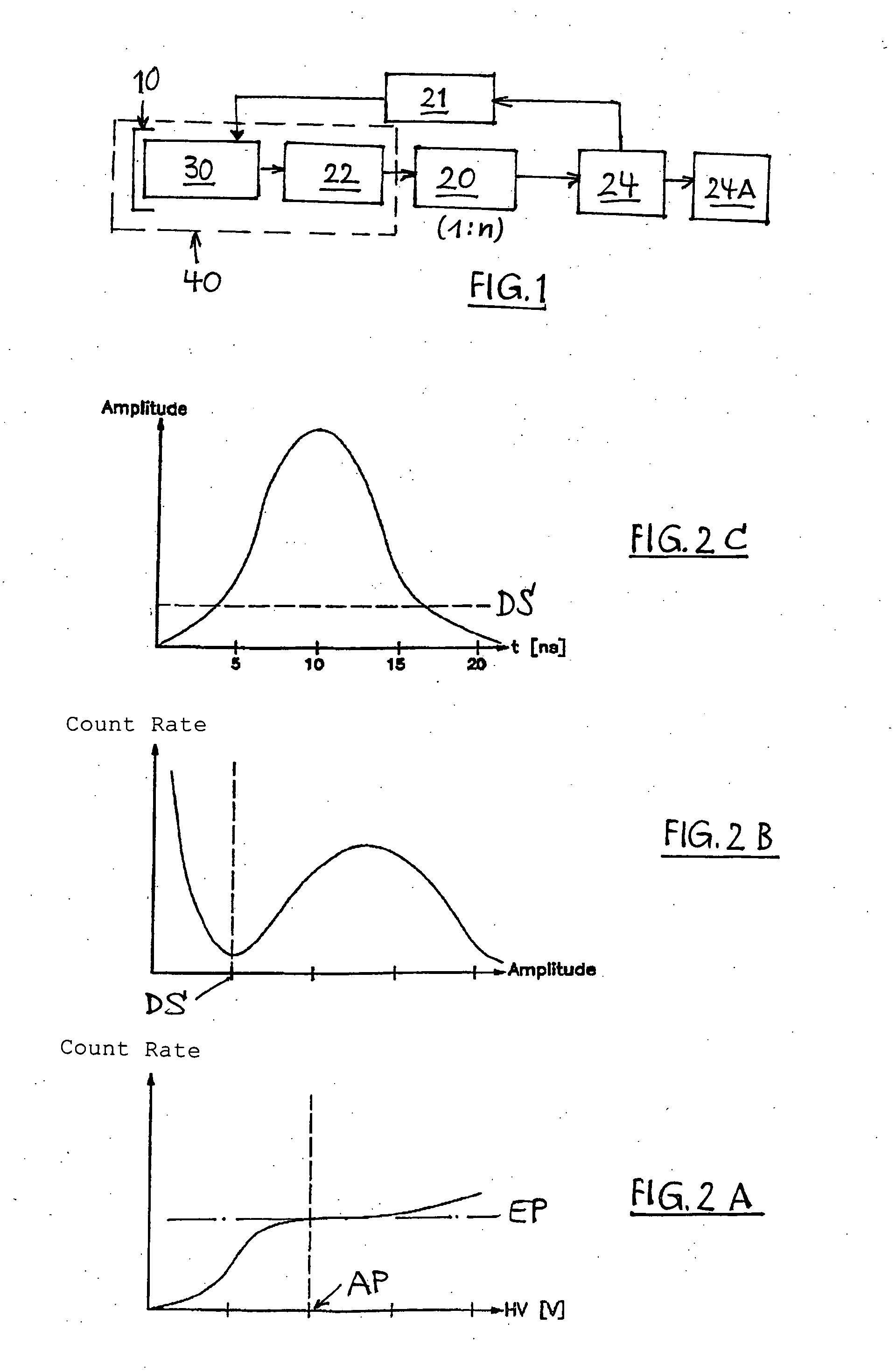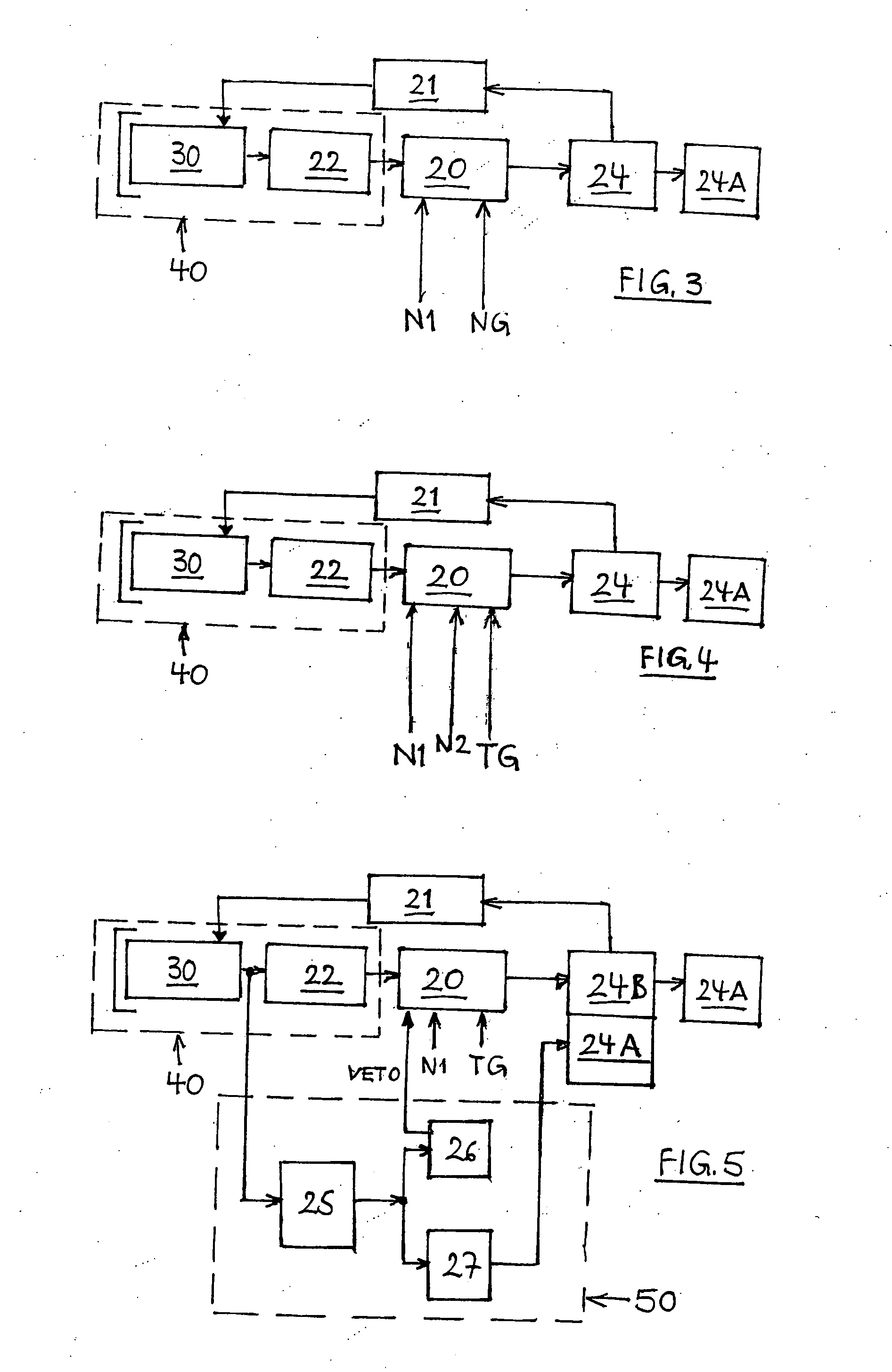Method and apparatus for detecting ionizing radiation
a technology of ionizing radiation and counting method, which is applied in the direction of measuring devices, instruments, material analysis through optical means, etc., can solve the problems of not being able to detect other types of radiation, and not being able to achieve visible plateaus. , to achieve the effect of improving the sensitivity of the measuring system, and good long-term stability
- Summary
- Abstract
- Description
- Claims
- Application Information
AI Technical Summary
Benefits of technology
Problems solved by technology
Method used
Image
Examples
Embodiment Construction
[0044]FIG. 1 shows an arrangement for performing the inventive process in its intrinsic design.
[0045] A photomultiplier 30 has assigned to it a scintillator 10 as a component of a detector whose inventive design will be described in detail based on examplary embodiments shown in FIGS. 6-11.
[0046] Photons generated in scintillator 10 due to the interactions described earlier herein are registered, amplified in the downstream photomultiplier 30, and the output pulses from photomultiplier 30 are supplied to a fast single-photon amplifier 22 with a discriminator stage. The discriminator stage acts to generate pulses of uniform amplitude for all single photons-that exceed a selected energy threshold, typically 20 mV, resulting in “normalized” pulses that can be properly processed in the following processing stages.
[0047] This arrangement of the photomultiplier 30 and single-photon amplifier 22 that is outlined in broken lines in FIG. 1, will be referred to below as the single-photon c...
PUM
 Login to View More
Login to View More Abstract
Description
Claims
Application Information
 Login to View More
Login to View More - R&D
- Intellectual Property
- Life Sciences
- Materials
- Tech Scout
- Unparalleled Data Quality
- Higher Quality Content
- 60% Fewer Hallucinations
Browse by: Latest US Patents, China's latest patents, Technical Efficacy Thesaurus, Application Domain, Technology Topic, Popular Technical Reports.
© 2025 PatSnap. All rights reserved.Legal|Privacy policy|Modern Slavery Act Transparency Statement|Sitemap|About US| Contact US: help@patsnap.com



